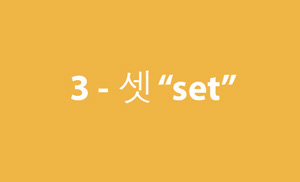Taekwondo 태권도Taekwondo Preschool
Promotion from one geup to the next can proceed rapidly in some schools, since schools often allow geup promotions every two, three, or four months. Students of geup rank learn the most basic techniques first, and then move on to more advanced techniques as they approach first dan. Many of the older and more traditional schools often take longer to allow students to test for higher ranks than newer, more contemporary schools, as they may not have the required testing intervals. View Taekwondo belt levels »

Chung Do Kwan 청도관
The original Taekwondo Kwans. In Korean literally means building or hall, but when used in martial arts it can also refer to a school or clan of martial artists who follow the same style and/or leader.
Chung Do Kwan, created by Won Kuk Lee in 1944, is the first of nine schools or kwan teaching what came to be known as taekwondo. This style of taekwondo is known for its overall power and emphasis on kicks to the head.
Founding
The Chung Do Kwan (靑濤館; "Blue Wave School") name was first used by Won Kuk Lee. Lee had studied Taekkyon in An Gup Dong (a neighborhood in Seoul), karate with Sensei Gichin Funakoshi in Okinawa, and kung fu at centers in Henan and Shanghai in China. Lee earned dan ranking in Shotokan karate. According to GM Yong Taek Chong (a student of Lee) "it is probable that he did practice in secret as a teenager because he told this author that when he first started training he and his first teachers would not exchange names due to possible consequences if someone got caught." Chung Do Kwan was the oldest of the martial arts schools, or "kwans", that were established following the Japanese Occupation of Korea.
Lee trained under Gichin Funakoshi Sensei at Chuo University in Japan. Lee also traveled to China and Okinawa, studying martial arts technique, history, and philosophy. According to Won Kuk Lee interview, the main differences among Korean style Tang Soo Do, Karate, and Kung Fu were in how pressure points were used and attacked.
The belt system of the Chung Do Kwan under Lee was as follows: White (8th-5th geup), Red (4th-1st geup) and Black (1st to 7th Dan). Testing occurred every six months and students would jump two geup levels per test (8th to 6th geup for example). The reason for this was that many Koreans at that time were poor and could not afford frequent testings.
Taekwondo
The name "Taekwondo" was proposed in 1955 by Choi Hong Hi. It was slow to catch on among other Kwan Heads (Kwan Jang). Two names which were actually the two historical names of Karate, pronounced in the Korean language were being used by the Kwan's. Tang Soo Do (Karate; China Hand Way), which was first used by Chung Do Kwan, was used by the following Kwan's. Tang Soo Do Chung Do Kwan, Tang Soo Do Moo Duk Kwan, Tang Soo Do Song Moo Kwan, Tang Soo Do Oh Do Kwan (ITF root) and Tang Soo Do Jung Do Kwan. The first Kwan to use Kong Soo Do (Karate; Empty Hand Way) was "Chosun Yunmookwan Kwonbop Kong Soo Do Bu" which later became Jidokwan. Kong So Do was used by the following Kwans. Kong Soo Do Jidokwan, Kong Soo Do Chang Moo Kwan, Kong So Do Han Moo Kwan. Kang Duk Won, also a kwan, used the moniker "Moo Do" instead of Tang Soo, or Kong Soo. The Oh Do Kwan and Chung Do Kwan adopted the name "Taekwondo" immediately at Gen. Choi's direction as he was head of both kwans at the time.
On August 5, 1965, the name "Taekwondo" was adopted by all Kwans because that became the official name under the Korea Taekwondo Association (KTA).
Development
The Chung Do Kwan was the first Kwan to open in Korea. Because of his law background, Lee was appointed as a teacher at the Korean Police Academy and many of his early students were police.
Later, the President of Korea, Rhee Seung Man, offered Lee the position of Minister of the Interior. However, when Lee politely refused, President Rhee arrested Lee as well as one of his senior students, Duk Sung Son. After being released, Lee and his family emigrated back to Japan immediately prior to the beginning of the Korean War. Before leaving Korea, Lee appointed his senior student, Yoo Ung Jun to succeed him as the Chung Do Kwan Kwan Jang. Yoo instead became a supporter of North Korea and eventually the position went to Duk Sung Son. Son was succeeded as President of the Chung Do Kwan by Uhm Woon Kyu in 1959.
Uhm served as the Chung Do Kwan President. Uhm also served as President of Kukkiwon (World Taekwondo Headquarters).

Original Taekwondo Kwans ( 관 )
In Korean, kwan ( 관 ) literally means building or hall, but when used in martial arts it can also refer to a school or clan of martial artists who follow the same style and/or leader. On January 8, 1977, nine of the largest kwans unified, recognizing the Kukkiwon 국기원 as being the black belt promotional body for taekwondo. Prior to this declaration, many practitioners had considered their individual kwan certifications as being more valuable than the certificates which were issued by the Kukkiwon 국기원 or Korea Taekwondo Association (KTA). For more information View Taekwondo Kwans ( 관 ) »
There are five tenets defined in the International Taekwondo Federation (ITF) and several more in World Taekwondo (WT).
Courtesy ( 예의 ye-ui ): "Showing courtesy to all, respecting others, having manners as well as maintaining the appropriate etiquette at all times, both within and outside the dojang (도장) (designated training area)." View Taekwondo Tenets »
RESOURCES
This article uses material from the Wikipedia article "Chung Do Kwan", which is released under the Creative Commons Attribution-Share-Alike License 3.0.




























